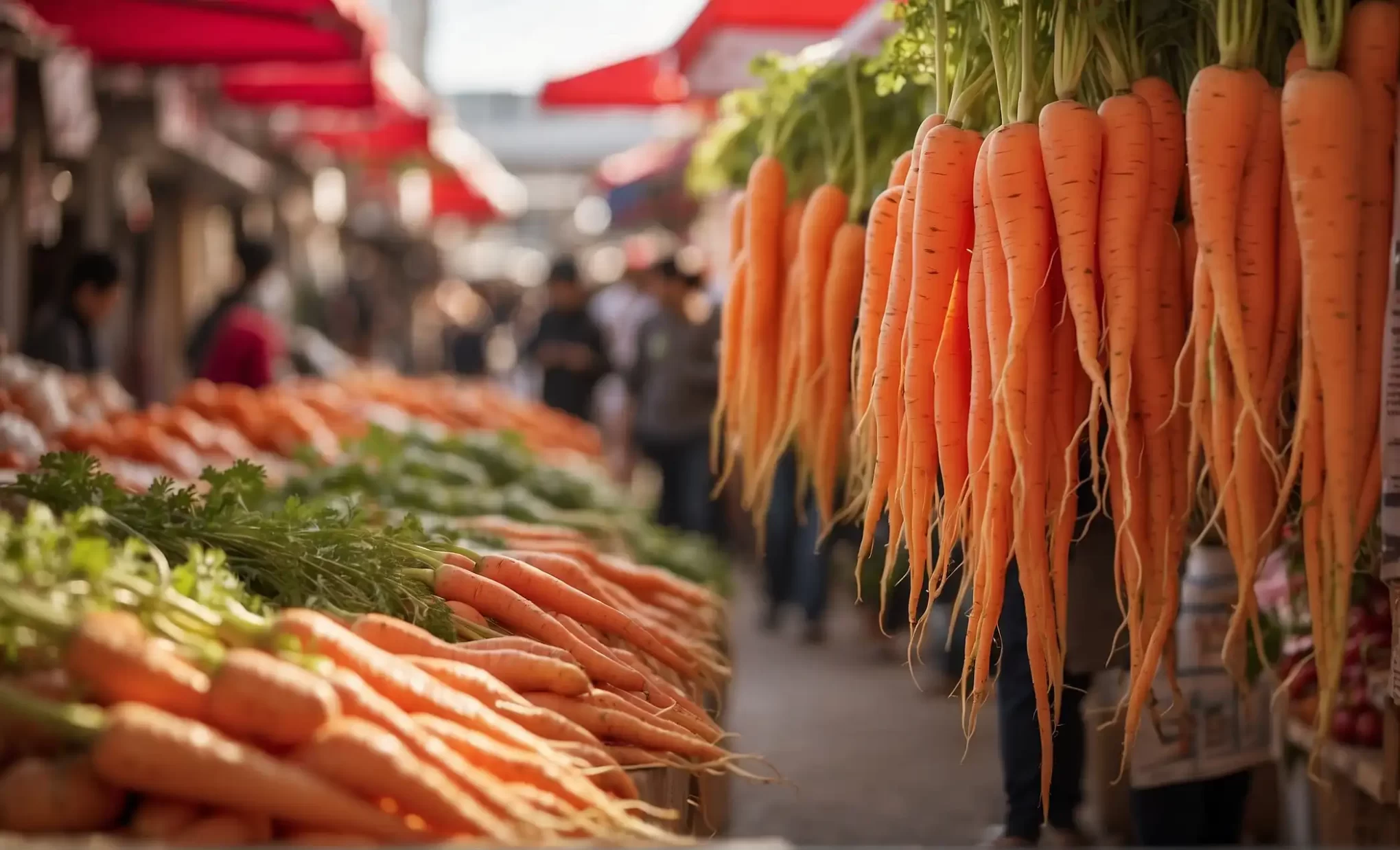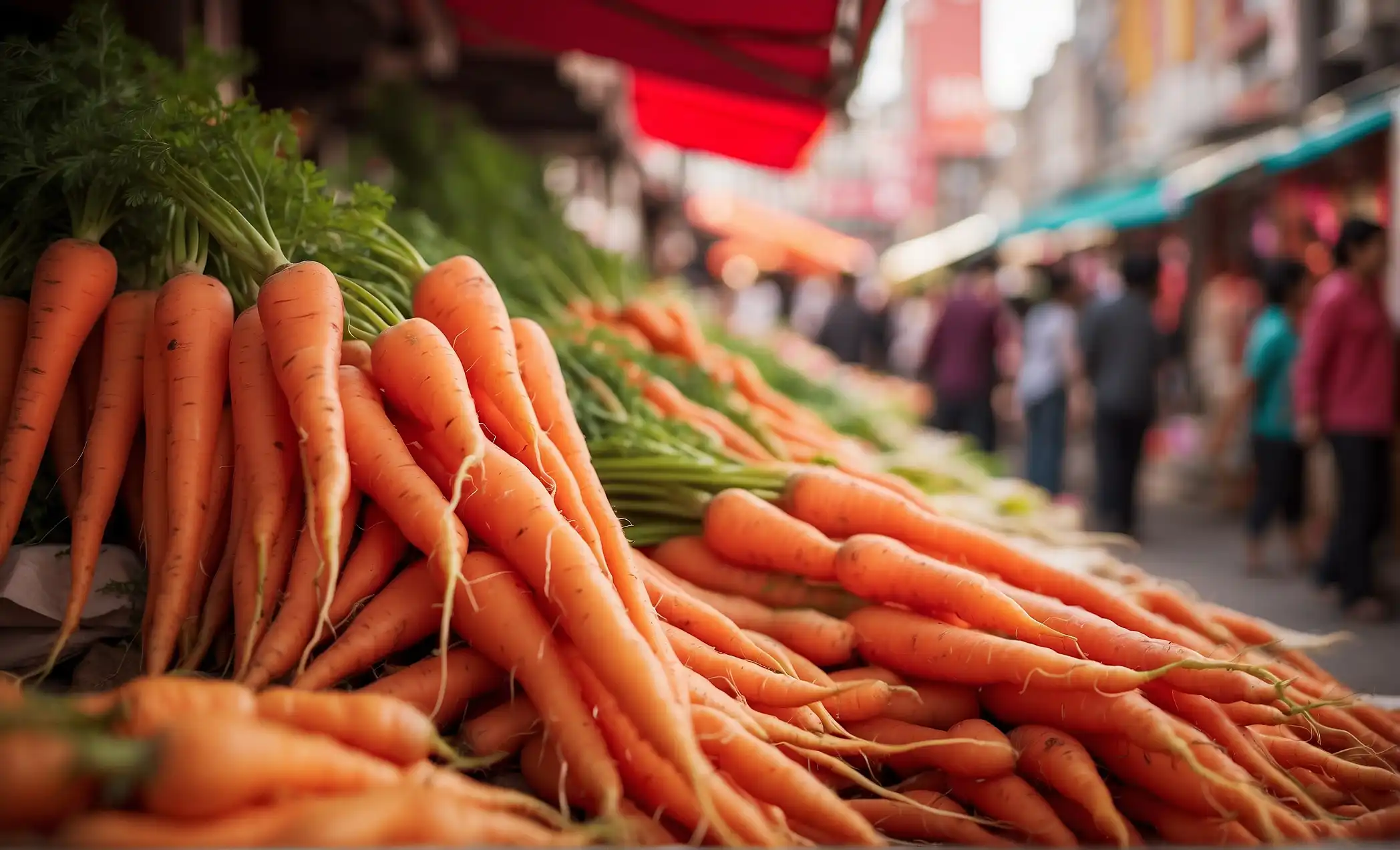Korean carrots are large due to selective breeding and optimal growing conditions. The size reflects agricultural expertise and favorable climate.
Korean carrots, known for their impressive size, result from dedicated agricultural practices aimed at yielding larger and more robust vegetables. Agriculturalists in Korea have honed selective breeding techniques, choosing carrot varieties that naturally grow larger than their counterparts. These carrots are cultivated in soil that’s rich in nutrients and with a climate that provides the ideal balance of sunlight and rainfall, fostering substantial growth.
Regional farming methods also play a crucial role, as farmers leverage generations of experience to optimize cultivation strategies. This confluence of factors ensures that Korean carrots not only grow big but also maintain their taste and nutritional value, making them popular both locally and in international markets. Consumers benefit from the delicious flavor and substantial size, which makes these carrots a favorite in many dishes.
About Korean Carrots
Korean carrots stand out in the global tapestry of cuisines, not just for their vibrant flavor but also for their impressively large size. A staple in various dishes, these gigantic roots are more than just a mere ingredient; they are a cultural symbol and a culinary marvel. Korean carrots are well-known for their crunch and deep orange hue, capturing the attention and hearts of food enthusiasts around the world.

Overview of Korean Carrots and Their Popularity
Korean carrots, known for their distinctive size, have carved a niche in the culinary world. These carrots are robust, typically larger than their Western counterparts, and packed with nutrients that contribute to their growing popularity. The unique preparation method distinguishes these carrots, as they are often seasoned and marinated with a mix of spices that enhance their natural sweetness and add a kick of flavor. Consequently, Korean carrots are not only a hit in their native land but have also gained popularity in international cuisine.
Historical Context: How Korean Carrots Became a Phenomenon
The rise of Korean carrots to fame can be traced back to immigrant influences, beginning when ethnic Koreans living in Central Asia started cultivating these vegetables in a way that suited both local conditions and their traditional culinary practices. Over time, these carrots grew larger in size and richer in taste, quickly becoming a culinary staple. This led to the development of the now-iconic spiced and seasoned carrot salad, which is a testament to the vegetable’s adaptability and appeal.
Agricultural Practices in South Korea
Korean carrots are renowned for their impressive size, a product of the nation’s meticulous agricultural practices. South Korea’s commitment to advancing its agricultural sector has resulted in the development of carrots that are not only big but also rich in flavor and nutrients. Below, explore the multifaceted approach that South Korean farmers take – from cutting-edge farming techniques to soil fertility methods – to cultivate these giant vegetables.
Advanced Farming Techniques in Korean Agriculture
Korean agriculture has made significant strides in incorporating advanced farming techniques that contribute to the growth of larger carrots. Techniques such as precision farming, which involves the careful monitoring and management of field variability in crops, are widespread. Farmers also utilize greenhouse cultivation and protected horticulture to create optimal growing conditions year-round, resulting in more substantial, high-quality yields.
The Role of Technology and Innovation
Technology and innovation are at the forefront of increasing carrot sizes in South Korea. Smart farming technologies such as automated irrigation systems, drones for aerial monitoring, and data-driven analytics enable farmers to make informed decisions that boost productivity. High-tech equipment ensures efficient planting and harvesting, while research in genetic crop improvement provides varieties of carrots that are naturally inclined to become larger.
Soil Management and Fertility Methods
Core to the success of Korean agriculture is effective soil management. Farmers place a high emphasis on maintaining soil health through organic fertilization, crop rotation, and cover cropping, which not only enriches the soil but also prevents disease. Robust soil fertility techniques, including the use of composts and biofertilizers, ensure that carrots receive the essential nutrients needed for optimal growth. Regular soil testing allows for tailored nutrient management, contributing to the sizeable and high-quality carrot harvests for which South Korea is known.
Genetics and Breeding of Korean Carrots
When exploring the expansive world of vegetables, the size and quality of Korean carrots stand out remarkably. Why are Korean carrots so big? The answer lies in the dedicated genetics and breeding programs that Korea has developed over the years. Sophisticated agricultural science has played a pivotal role in enhancing the natural characteristics of carrots, leading to larger and more nutritious varieties that are a staple in both Korean cuisine and global markets.
Selection and Breeding for Size: A Korean Approach
Size plays a significant role in the popularity of Korean carrots, both for their visual appeal and for providing a hearty, nutritious vegetable. Through a meticulous process known as selection and breeding, Korean agriculturalists have strategically chosen carrot plants with advantageous traits over successive generations. This results in cultivating carrots that consistently exhibit larger size without compromising on taste or nutritional value.
The breeding process incorporates:
- Observation: Identifying individual plants with desirable size traits.
- Cross-Pollination: Combining these plants to amalgamate the traits.
- Evaluation: Assessing the progeny for size and quality.
- Selection: Choosing the best performers for further breeding.
Hybrid Varieties and Genetically Modified Carrots
To further enhance the size and quality of Korean carrots, scientists have been developing hybrid varieties. These hybrids are created by cross-breeding two different but related parent plants to produce an offspring that possesses the best traits of both. Notably, these hybrids often translate to larger carrots, showing improved resistance to pests and diseases as well.
While there is a distinction, some may confuse hybrids with genetically modified (GM) carrots. GM carrots have been altered at the DNA level, potentially introducing new characteristics. Although GM carrots offer certain advantages, such as disease resistance or nutritional enhancement, they are subject to rigorous regulatory scrutiny before reaching consumers.
Impact of Climate and Environment on Carrot Growth
Beyond genetics, the climate and environmental conditions in Korea significantly influence carrot growth. Optimal soil conditions, along with Korea’s distinct seasonal climate, provide an ideal setting for carrots to develop to their full potential. Key environmental factors contributing to the size of Korean carrots include:
| Factor | Impact on Carrot Growth |
|---|---|
| Soil Fertility | Rich, well-drained soil contributes to robust root development. |
| Temperature | Moderate temperatures promote steady and significant growth. |
| Water Supply | Consistent moisture is critical for size expansion. |
| Sunlight | Adequate sunlight ensures essential photosynthesis for growth. |
Conclusively, the blend of concerted breeding efforts, hybridization advancements, and favorable environmental conditions are the crux behind the impressive size of Korean carrots. Their dimensional superiority and nutritional density are a testament to Korea’s agricultural innovation.
Learn more: How to Caramelize Carrots Without Sugar
Cultural and Economic Implications
The size of Korean carrots isn’t just a horticultural bragging point; it’s ingrained in the cultural fabric and carries a hefty economic significance. These large, often sweet carrots have found their way into both traditional dishes and contemporary culinary innovations. But beyond the kitchen, the dimensions of these root vegetables reveal a fertile ground for economic analysis, including international trade dynamics and the sustainability of agricultural practices.
Carrots in Korean Cuisine and Culture
Korean cuisine is renowned for its vibrant flavors and healthful ingredients, and carrots play a starring role in numerous dishes. Big carrots become culinary centerpieces due to their versatility and aesthetic appeal.
- Banchan (side dishes) often feature julienned carrots for crunch and color.
- Kimchi varieties incorporate carrots as both a core ingredient and garnish.
- Soups and stews use them to add sweetness and texture.
Not only are large carrots preferred for their taste but also for their symbolism, as they represent prosperity in Korean society. Big, hearty vegetables are synonymous with bountiful harvests and well-being.
Economic Impact: Export Market for Large Carrots
The global appetite for Korean cuisine has turned these oversized carrots from a local specialty into a valuable export commodity. Korea’s agricultural sector has capitalized on this trend, adapting techniques to meet international demand.
| Country | Export Value | Trend |
|---|---|---|
| Japan | $20 million | Rising |
| China | $15 million | Stable |
This export market not only bolsters national revenues but also supports local farmers by creating jobs and fostering community development.
Future Prospects: Sustainability and Export Growth
With increasing international interest, the pressure is on to maintain a balance between demand and sustainable practices. Korean agronomists and policymakers are forging paths to ensure the future of carrot exports is as bright as their color.
- Developing eco-friendly farming methods to maintain soil health.
- Introducing high-yield, disease-resistant carrot varieties.
- Expanding market reach to emerging economies.
Maintaining this trajectory, Korean carrot exports are poised for considerable growth. This promising future is not only a testament to culinary appeal but also to Korea’s commitment to sustainable export-led economic development.
See also: How to Soften Carrots
Conclusion
In summing up the fascinating journey of Korean carrots, we see that their size is no accident. Careful cultivation, ideal soil conditions, and innovative farming methods have all contributed to their impressive stature. As we enjoy these crunchy, nutritious giants, let’s appreciate the agricultural mastery that makes them possible.
Remember, big flavor comes in large packages—Korean carrots are a testament to that. Nurture your passion for carrots and gardening. Continue your journey with Farm Pioneer and our Carrots section, where each article is a seed of wisdom.
